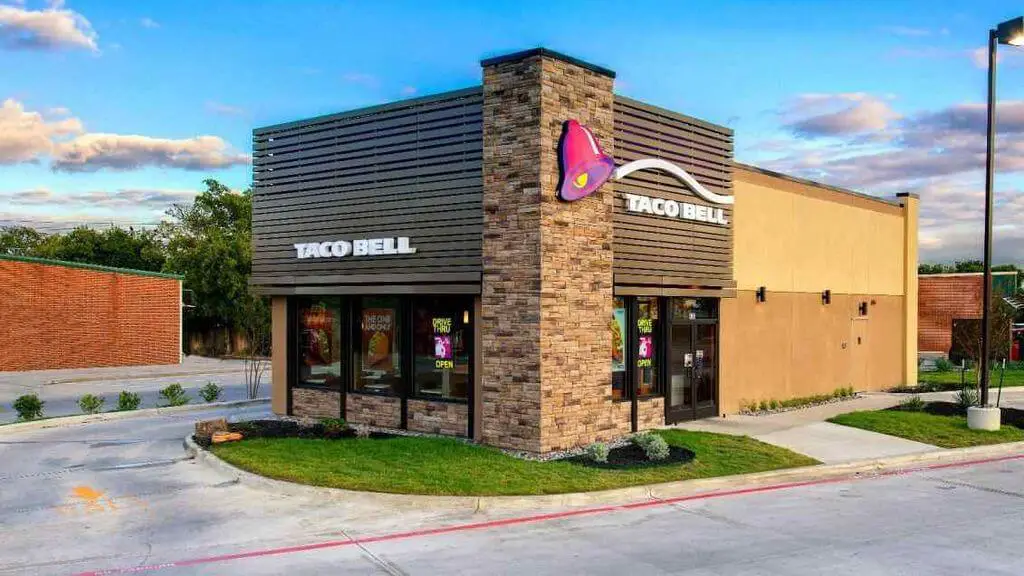Taco Bell Mission and Vision Statement Analysis

Taco Bell’s mission statement is “We take pride in making the best Mexican style fast food providing fast, friendly, & accurate service. We are the employer of choice offering team members’ opportunities for growth, advancement, & rewarding careers in a fun, safe working environment. We are accountable for profitability in everything we do, providing our shareholders with value growth.” The statement talks about the quality that the company strives to achieve for its customers, together with other services that satisfy the needs of other stakeholders. It has these characteristics:
- Improving health. Taco Bell recognizes the inseparable bond between health and food in its branding. To satisfy this element, the restaurant has raised the standard of how it handles, prepares, and serves its fast food items in the sector. In fact, the standards associated with this facility are admirable especially the freshness and the nutrition richness of the food products it serves customers. To Taco Bell, the satisfaction and health of the customers come second to no other, and this requirement is one of the traits that have made the fast-food restaurant a favorite for many clients across the globe.
- Best Mexican style foods. At Taco Bell, everything is Mexican based, including the dishes served and service styles. This is the branding the company adopted to carve out its own unique market in the fast-food sector. The decision to focus on the identified types of fast food has, in no doubt, worked for Taco Bell. The restaurant has mastered its art in making the best Mexican fast food items, and this has added to the popularity of the company. The touch of Mexican culture in the appearance of all Taco Bell’s outlets takes the Mexican style a notch higher, and this explains the love the company gets from all its customers worldwide.
- Improving communities. When it comes to spreading its impacts, Taco Bell knows how to do this best by creating innovative initiatives that make a difference in society. Ideally, the company indicates that it finds a sense of fulfillment by contributing to the future of tomorrow. For instance, the Taco Bell Foundation is one of the ideas the company uses to improve communities by directing its resources to the development of youths.
Introduction
Taco Bell is a fast-food company whose mission and vision statements have seen the company become one of the most competitive players in the sector. The success of a company in the fast-food industry is dependent on a variety of factors with the quality of the products and services offered by the company being one of these.
Shrewd market targeting comes second, and this is an element that both the mission and vision statements of Taco Bell captures. In fact, the ability to distinguish itself through its corporate statements is what has enabled Taco Bell to grow so rapidly into a multi-billion enterprise in close to 60 years since its foundation by Glen Bell in 1962. A corporate vision statement outlines the achievements a company desires to have in the future, while a corporate mission statement highlights the strategies that are best applicable to the realization of this future.
The vision statement of Taco Bell emphasizes the developmental path of its brand and the projected authority the company wants to have on the fast-food industry across the globe. For the mission statement, Taco Bell inclines on the determination of the restaurant to distinguish itself from the other players through quality and product specialization.
Taco Bell also prides itself in having the most impactful core values that stimulate a strong Taco Bell culture. The presence of these values directly contributes to the overall capability of Taco Bell to fulfill its mission and vision statements. Therefore, the seamless interaction of all the three, mission, vision and core values strategically positions Taco Bell in a winning position in the fast-food sector.
Vision Statement
Taco Bell’s vision statement is “to grow into the largest fast-food provider of Mexican style cuisine in emerging markets.” The statement is all about how the company projects are overall growth to conquer the fast-food industry not only local in the U.S but also at the global level. The statement has the following features:
- Largest fast food provider. Taco Bell is definitely not satisfied with being a popular fast food restaurant. The strategy of the company is to also grow both in size and worth. By adopting a branding that few other fast-food restaurants understand, targeting Mexican-style dishes, Taco Bell opened up a potential where it can only limit itself. In fact, the historical events of how the company has been developing swiftly is an indication that it still has a lot of growth potential.
- Conquer emerging markets. In this feature of its vision statement, Taco Bell focuses on becoming a global enterprise. The company projects to open up outlets across the globe, and let more of its global audience enjoy the distinguished products and services it provides. The company is achieving this through its elaborate international franchise opportunities. This ambition is highly supported by the strategies outlined in the mission statement of the company especially in supporting shareholders and investors of Taco Bell.
Core Values
Taco Bell’s core values comprise “quality first, customer-loyalty, honesty, and teamwork.” These are the principles that Taco Bell uses to guide its decision-making processes and cultivate a culture that seconds its projected growth.
The most important aspect at Taco Bell as shown by its core values is making products that leave its customers not only satisfied but also mind-blown. The company also recognizes the importance of exceptional services to the customers as this is what determines its progressive growth, especially in the new markets. This also relates to the demand for honesty and trustworthiness of the company, especially in its strategizing and pricing. By doing this, Taco Bell positions itself in such a way that it can attract investors and partners because of the credibility it has created. Finally, Taco Bell has succeeded so far due to the value it places on all the people ranging from its employees, customers, stakeholders, and the community at large.
References
- Adamek, D. J., & Anderson, J. A. (1977). U.S. Patent No. 4,018,905. Washington, DC: U.S. Patent and Trademark Office.
- Bart, C. K. (1997). Industrial firms and the power of mission. Industrial Marketing Management, 26(4), 371-383.
- Bartkus, B., Glassman, M., & McAfee, R. B. (2000). Mission statements: are they smoke and mirrors?. Business Horizons, 43(6), 23-23.
- Bowen, D. E., & Youngdahl, W. E. (1998). “Lean” service: in defense of a production-line approach. International journal of service industry management, 9(3), 207-225.
- Cady, S. H., Wheeler, J. V., DeWolf, J., & Brodke, M. (2011). Mission, vision, and values: what do they say?. Organization Development Journal, 29(1).
- Durnford, T. (1997). Redefining Value: For Whom the Taco Bell Tolls. Cornell Hotel and Restaurant Administration Quarterly, 38(3), 74-80.
- Enz, C. A. (2005). Multibranding strategy: the case of Yum! Brands. Cornell Hotel and Restaurant Administration Quarterly, 46(1), 85-91.
- Hamilton, T. (2013). Beyond market signals: Negotiating marketplace politics and corporate responsibilities. Economic Geography, 89(3), 285-307.
- Hueter, J., & Swart, W. (1998). An integrated labor-management system for Taco Bell. Interfaces, 28(1), 75-91.
- Jensen, K., & Carlson, C. G. (1999). U.S. Patent Application No. 29/080,853.
- King, D. L., Case, C. J., & Premo, K. M. (2010). Current mission statement emphasis: be ethical and go global. Academy of Strategic Management Journal, 9(2), 71.
- Luo, X., Wang, H., Raithel, S., & Zheng, Q. (2015). Corporate social performance, analyst stock recommendations, and firm future returns. Strategic Management Journal, 36(1), 123-136.
- Maloni, M. J., & Brown, M. E. (2006). Corporate social responsibility in the supply chain: an application in the food industry. Journal of business ethics, 68(1), 35-52.
- Manning, C., Rodriguez, M., & Ghosh, C. (1999). Devising a corporate facility location strategy to maximize shareholder wealth. Journal of Real Estate Research, 17(3), 321-340.
- Salem Khalifa, A. (2011). Three Fs for the mission statement: what’s next?. Journal of Strategy and Management, 4(1), 25-43.
- Taco Bell – About.
- Tessier, S. (2007). Rethinking the food chain: Farmworkers and the taco bell boycott. Journal of Developing Societies, 23(1-2), 89-97.
- Wathne, K. H., & Heide, J. B. (2000). Opportunism in interfirm relationships: Forms, outcomes, and solutions. Journal of marketing, 64(4), 36-51.


